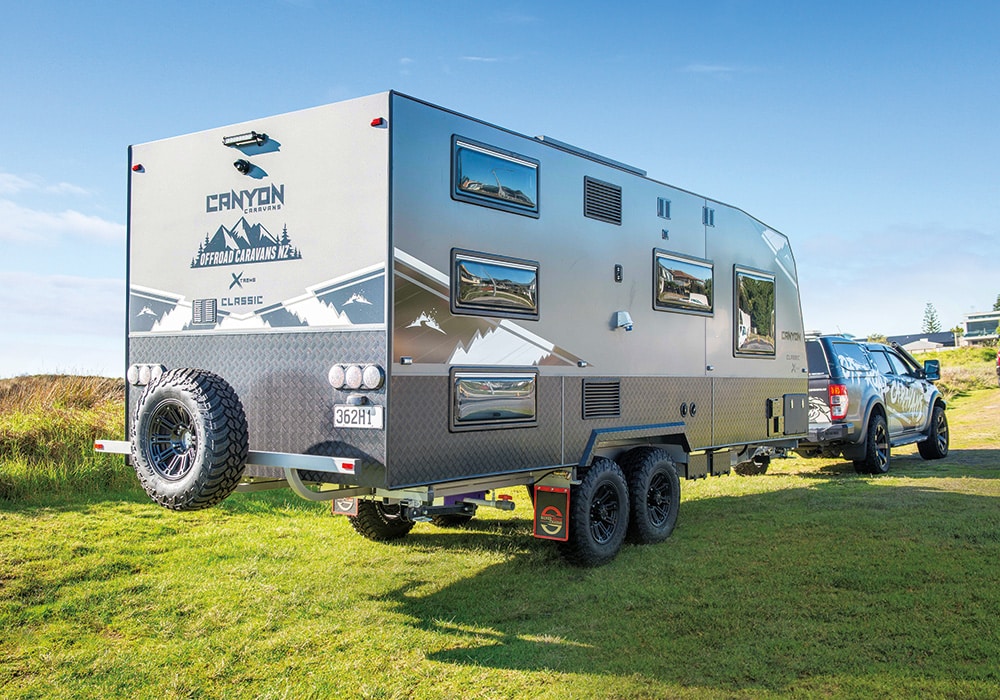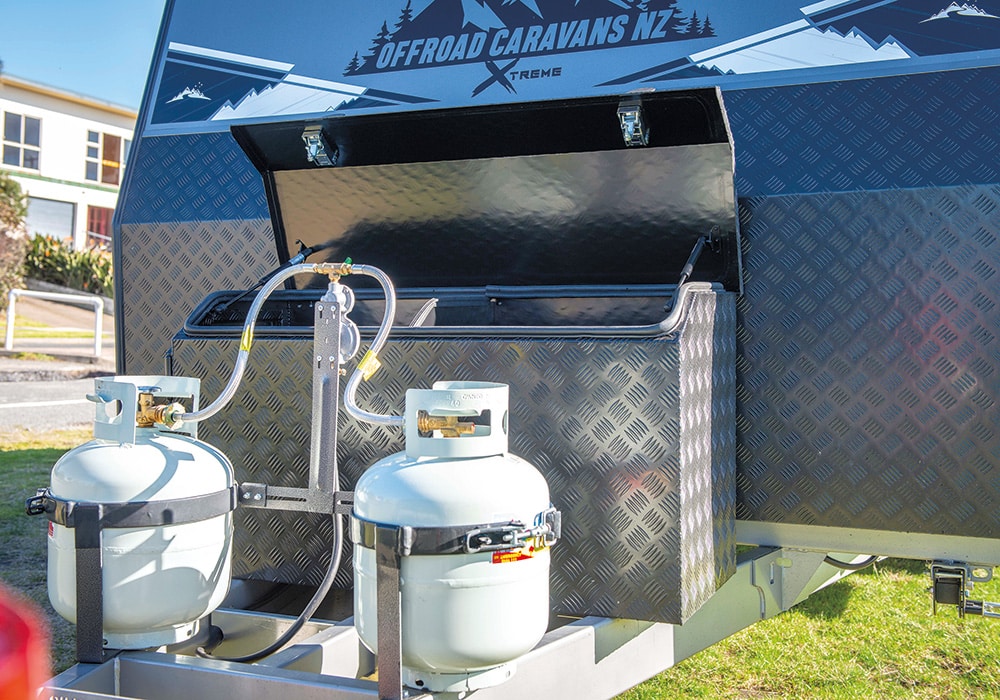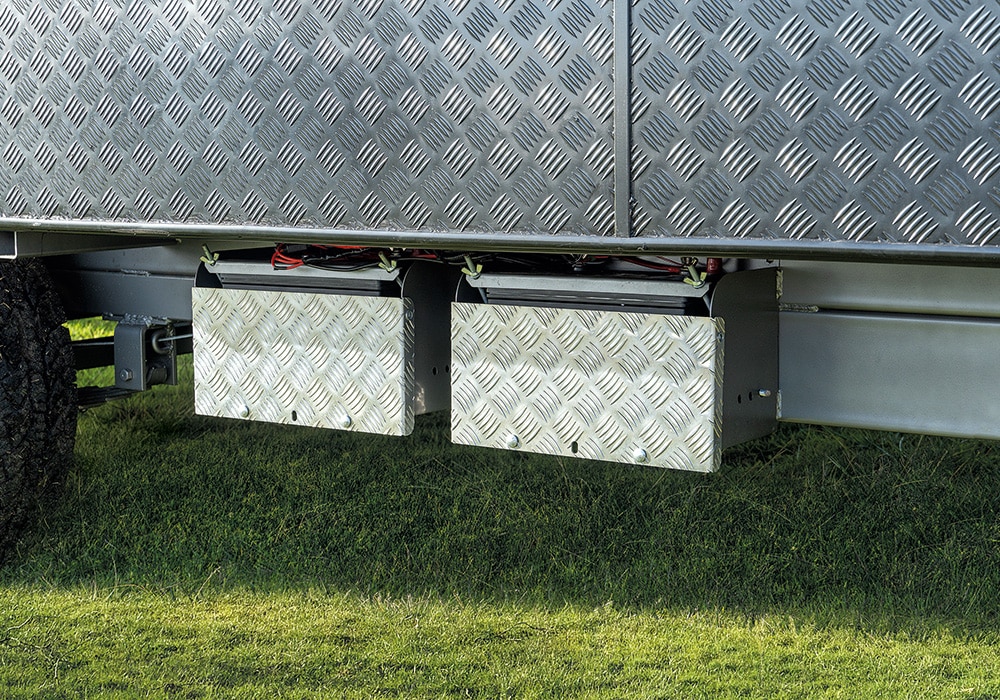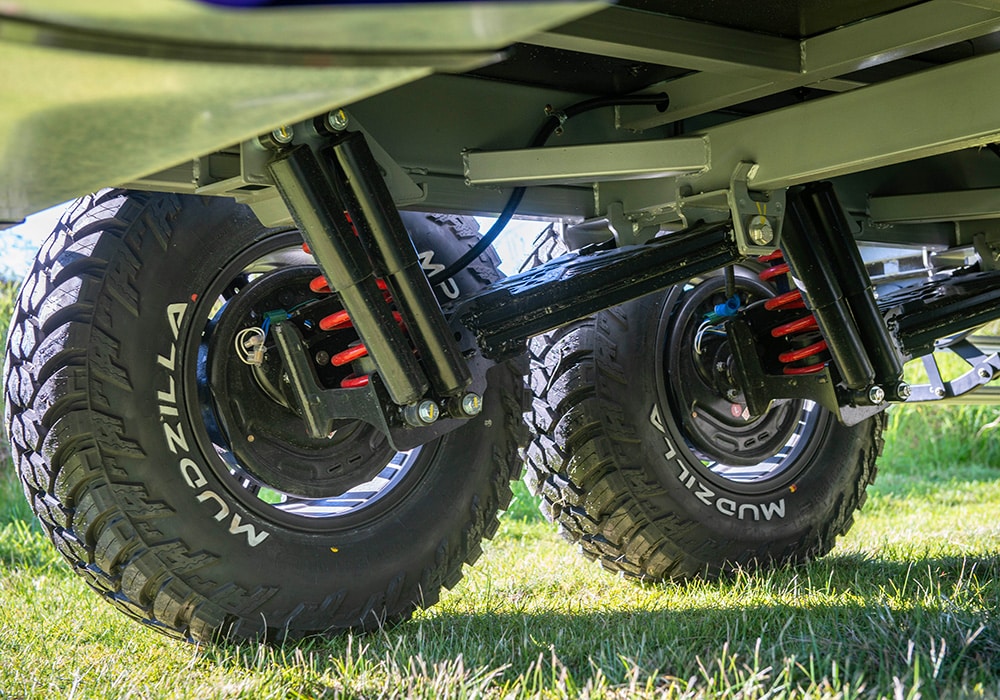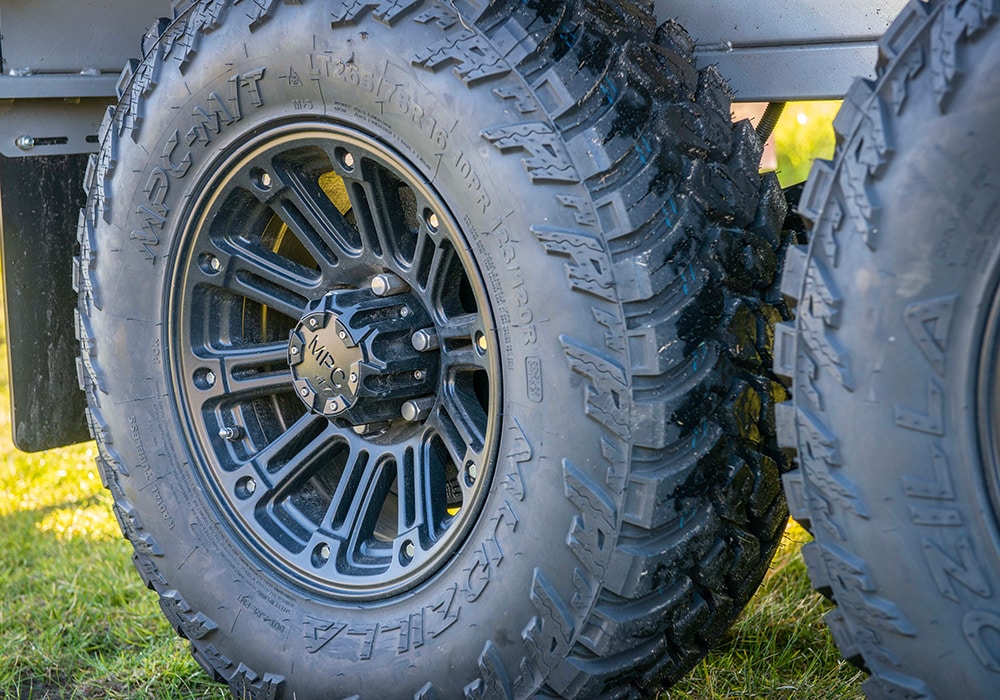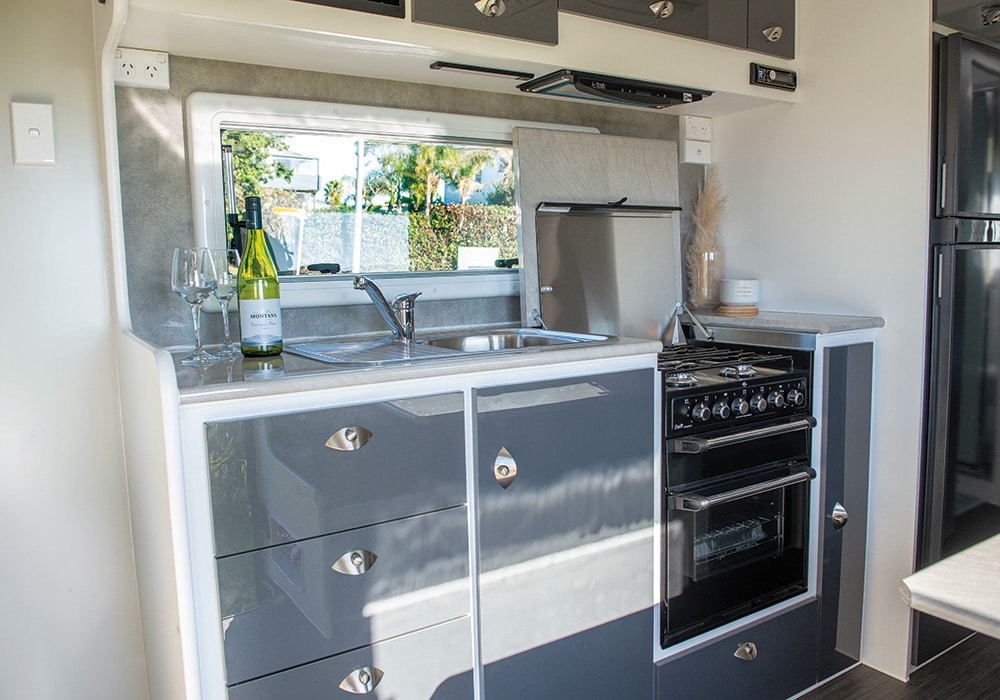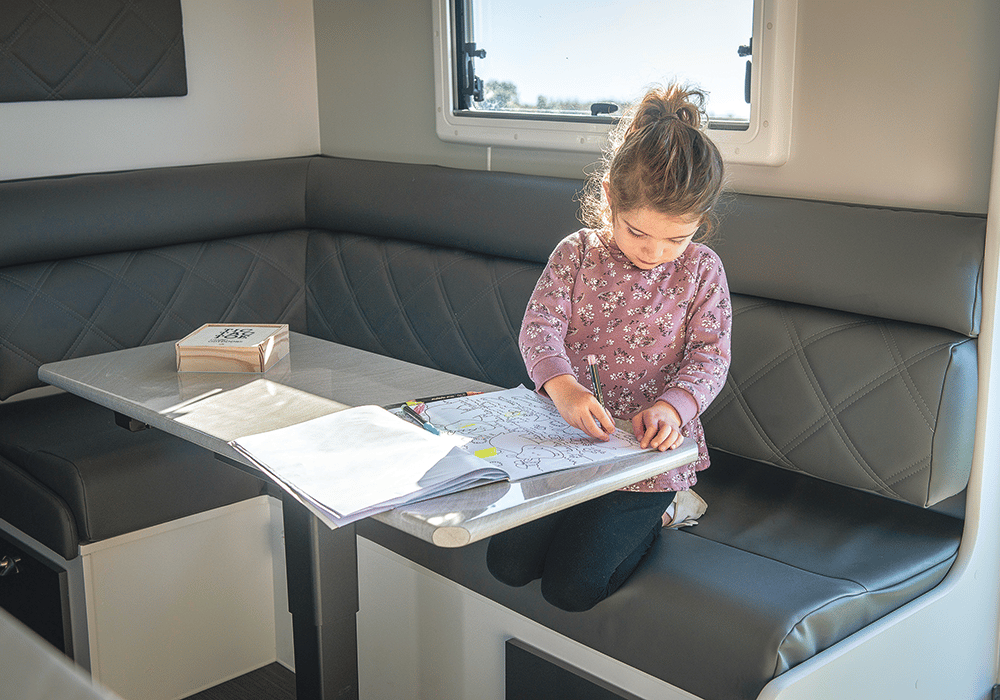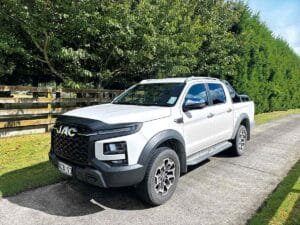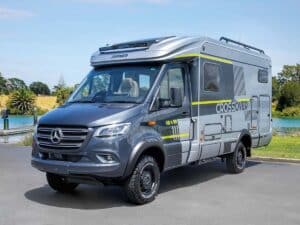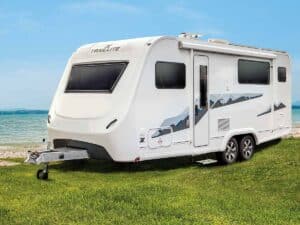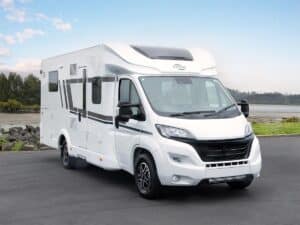GRAND CANYONS
The Aussie-made Canyon caravan range has arrived in New Zealand via importer and dealer, Off Road Caravans. Paul Owen gets the details.
Mention the word ‘Canyon’ and the listener will either think of that spectacularly deep gouge in the high Arizona desert, or the high-end bicycles that bear the name and are only available online. Few will associate the name with caravans. However, that’s slowly changing as the Aussie-made Canyon caravan range grows in popularity. Looking durable and robust on the outside, and full of comfort on the inside, the Canyon range has just jumped the ditch through New Zealand importer and dealer, Off Road Caravans, located in Papamoa, near Tauranga.
Little fanfare preceded Canyon’s arrival here back in June 2021. Off Road Caravans owners Courtney Butcher and Matt Wilson have yet to display the caravans at a show (although they are about to), yet the firm has sold 95 so far, and is currently holding orders for a further 80. Matt says that this successful debut is driven by two factors. “Our customers tour all the caravan dealerships in the Tauranga region before coming to see us and when they get here, they usually settle on buying a caravan from us,” he says. “They instantly like what they see, and when I tell them that we can usually deliver the caravan by the first week of the following month, it firms up their interest in owning a Canyon.”
Off Road Caravans can provide the right caravan at the right time, helped by the paid forward orders that Matt and his partner Courtney place with the Melbourne-based Canyon Caravans head office. Naturally the amount of customisation required by the customer affects the lead time needed to build in those features, and external factors such as unexpected shipping snafus can affect the ability of Off Road Caravans to deliver on its ‘first week of next month’ promise, but shorter waits between the initial signing of the sales purchase order and the towing away of your new Canyon caravan appear to have become a unique selling point for the brand in this country.
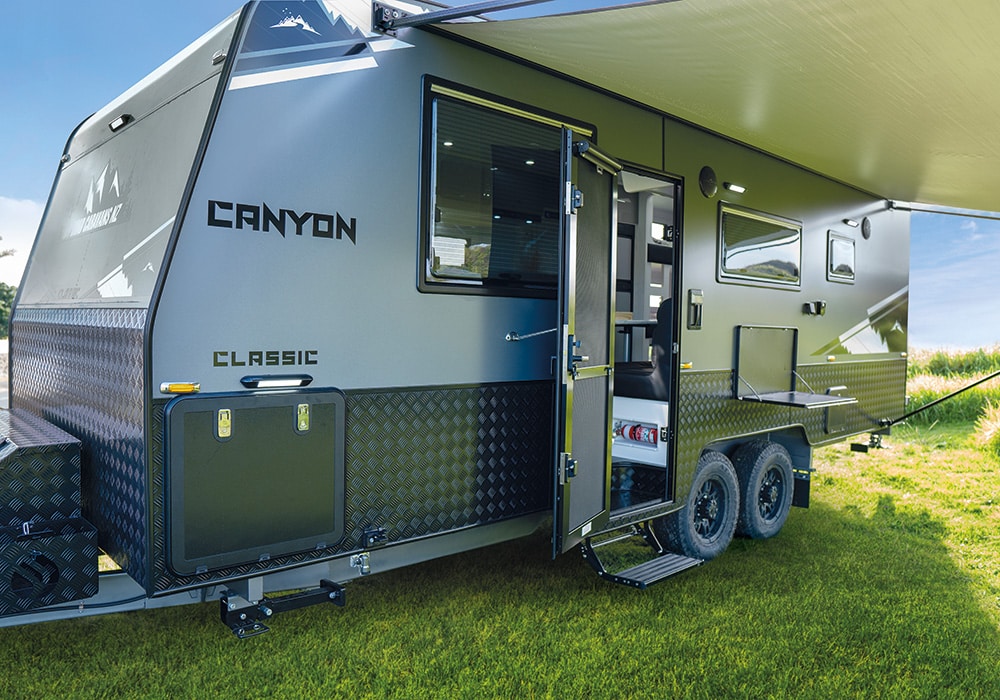
TRUE BLUE
That point of difference is important because robust-looking, semi-offroad oriented, tandem-axle Australian caravans share so many similarities that they can be tricky to tell apart. All come ready for long periods of wilderness camping, with generously-sized water storage and plenty of zap stashed in their large capacity batteries, the reserves of domestic energy topped up for free by a significant acreage of roof-mounted solar panels.
The 8.5m long Canyon Classic reviewed here is fully ready to hit the road, with its twin 100Ah deep-cycle batteries, twin 170w solar panels, and twin 95L freshwater tanks backed up by 95L of greywater stowage. While we’re talking twin-everythings, there’s also twin 9kg gas bottles located on the drawbar. If you tick the diesel heating option for the $104,000 Classic, as many Kiwi buyers do, those twin reservoirs of gas will likely last quite a long time – a desirable lift in convenience for those thinking of living in their Canyon year-round.
Australia boasts over 200 caravan makers, but the epicentre of the industry is the north-eastern Melbourne suburb of Campellfield, located on the flyover approach to Tullamarine Airport. Here, six large caravan factories serve 10 of the biggest and fastest-growing Aussie brands, and Canyon often shares its manufacturing facility with other companies.
IN THE FRAME
New Zealand-bound Canyons come with their framing made of sturdy Meranti hardwood, although CNC-machined pine is an option offered in Australia to cost- sensitive customers. The comprehensively framed skeleton of the caravans is clad with plywood on the inside and composite walls and roof on the outside, the gaps between the wood filled with insulation. For those who’d prefer a lighter Canyon, rippled aluminum is offered as optional cladding, resulting in both a purchase cost saving and a decent reduction in mass.
Australians often disparagingly refer to the latter caravan construction format as ‘stick and tin’. However, as with the composite-walled Canyons, it also results in an ultra-strong structure that’s engineered to take on the corrugated dirt roads of the outback. The only drawback of that strength that is a given on hardwood framed caravans is increased mass, and the Canyon Classic weighs between 2.4 and 2.5 tonnes depending on the specification. Use the 750kg payload to the full and it’s clear that you’ll need a tow vehicle equipped and rated to tow at least 3,500kg to stay on the right side of traffic safety rules.
TOUGH MUDDER
There’s certainly plenty of beef found beneath the Canyon’s luxurious cabin. The beams of the caravan trailer are fashioned from three-gauge steel (which means the steel is 6.4mm thick), which is zinc-plated and powder-coated for corrosion protection (hot-dip galvanising is also offered as an option). If left as standard, the Classic rolls on AL-KO ‘roller rocker’ suspension, which enhances the performance of the leaf springs by mounting them on rocker arms front and rear. Optional independent coil spring suspension systems are also available, with the pick of set-ups from AL-KO, Pedders and Tough Ride. Usually, these add around $6,000 to the cost of a tandem axle caravan.
The Canyon Classic rides on 15” alloy wheels, pulled by a heavy duty coupling mounted on an extended three-gauge steel drawbar, and its considerable momentum is arrested by 10” electrically activated drum brakes when required. Extensive use of protective checkerplate, a strong rear bumper bar with an easily accessed spare wheel, and the external mounting of gas bottles and the diesel tank for the optional heating system give it the tough, function- over-form image expected of an all-roads- ready Australian caravan.
CROCODILE DUNDEE IN A TUXEDO
Inside, the Canyon Classic is light and airy thanks to two generously sized skylights, creating a stark contrast to the darker decorations of the exterior, and there’s plenty of room designed into it to move or stretch out.
The space is apparent when you step inside via the pull-out aluminum step and swivel your head left to take in the permanent island bed and its attendant wardrobes and bedside cabinets. Equipped with a proper inner sprung mattress and twin gas struts to assist any lifting up of the hinged base when accessing the large under-bed storage area, the master bed can probably even accommodate prop forwards at 6’ 2” in length.
That’s a longitudinal dimension matched by the stacked bunks found at the other end of the Canyon Classic, making them suitable for use by fully-grown humans. There’s the choice of having two or three bunks back there, and – if choosing the former – optional storage and an external hatch can be added back there.
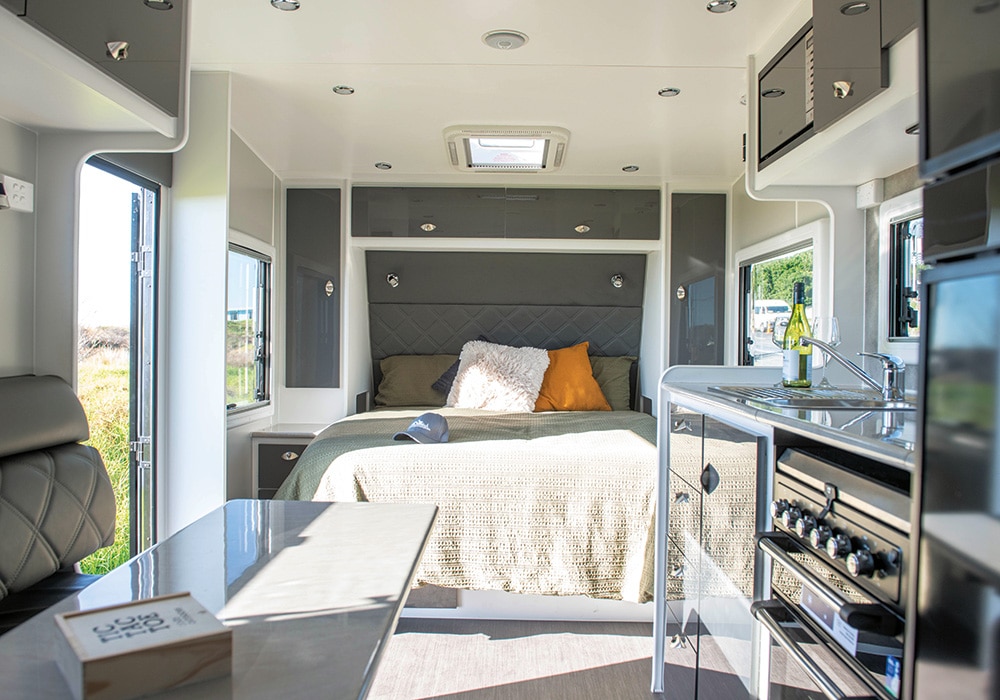
KITCHEN LIVING
The kitchen occupies one side of the middle section of the Classic, faced by an L-shaped lounge and table on the other side. You can choose either matte or gloss door finishes for the cupboards above and below the stainless-steel sink and match them to a wide selection of single-piece vinyl floor coverings. The cupboard doors are mounted on nickel-plated ‘piano hinges’ that are twice as long and therefore have twice the strength of ordinary hinges, and the overhead cupboards are easy to open thanks to the gas struts mounted at either end. While talking hinges, a nice touch to the cooking area is the hinged piece of laminated bench top that covers the recessed stove/oven. This creates a long usable bench when the stove isn’t required, and flips up out of the way when it is.
The stove/oven has three gas hobs and one electric, and a decent-sized oven/ grille. It’s accompanied by a 199L three- way fridge/freezer that has enough oomph to keep things cool even in tropical weather. A microwave oven, slide-out pantry, and flush-mounted rangehood complete the kitchen.
Infotainment is supplied by a 24” 12V high-definition LED TV, accompanied by a stereo head unit that drives sound to two internal speakers as well as two marine-grade external speakers if required. The TV mount allows the screen to be oriented either towards the main bed or to the lounge, while the stereo has Bluetooth, a USB port, and an auxiliary jack to guarantee connectivity. It’ll even play compact discs if you still have any.
Across from the bunks is the ensuite, featuring a large shower cubicle in the rear left corner, a flush toilet located by the lounge, and a vanity unit in between the two. Like most Aussie caravans of this size, there’s a front-loading washing machine mounted against the centre of the rear wall. It helps balance the caravan so that the Canyon Classic places approximately 160kg of its mass on the towball.
BIG RIPPER
You get what you pay for with the $104,000 Canyon Classic caravan. It’s a robust van that’s built to last, and to provide years of comfortable living. The niche that it occupies in the caravan market is filling rapidly with new competitors, but the Canyon arguably sets the standard for the sector when it comes to bang for your buck.
FLOORPLAN CANYON CLASSIC
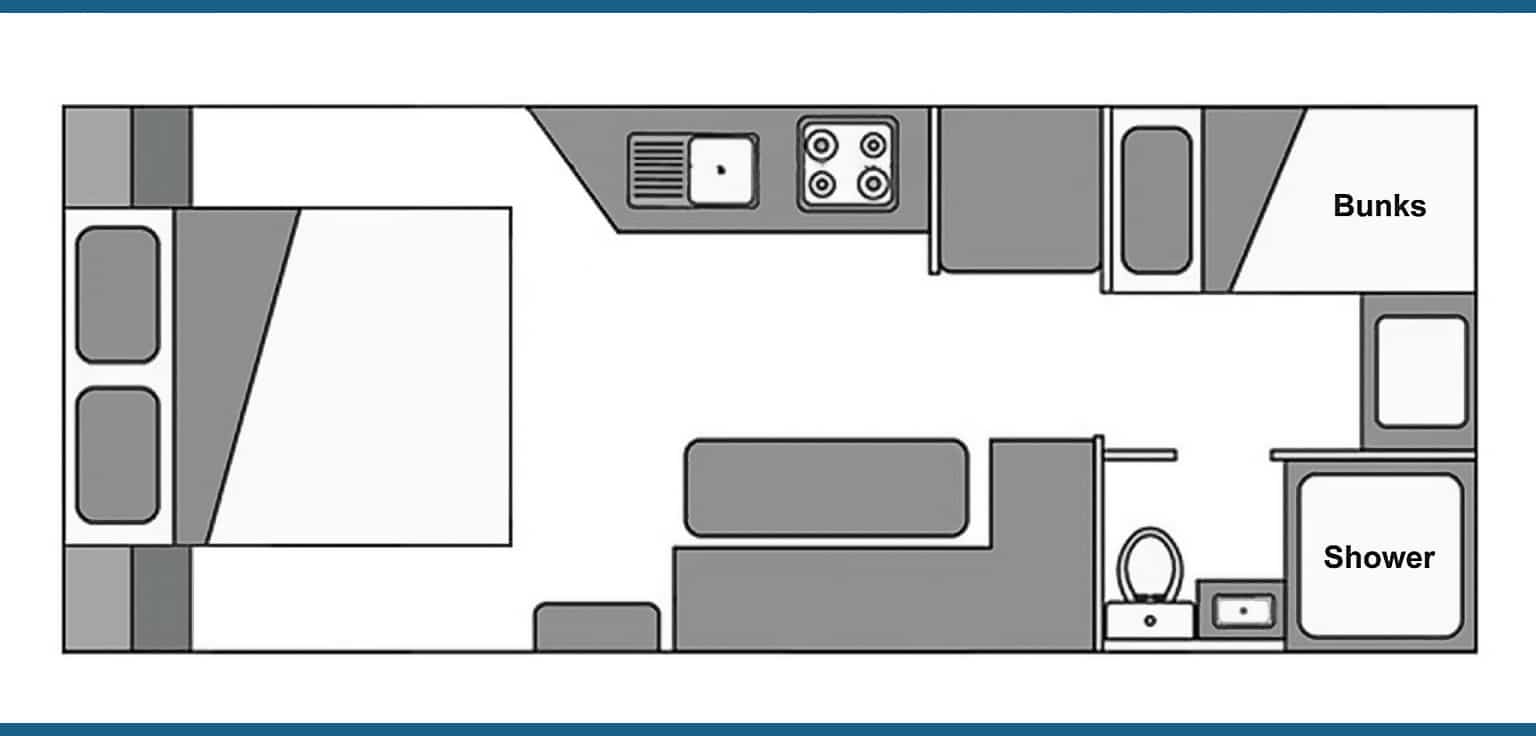
| Make & model: | Canyon Classic |
|---|---|
| Chassis: | Heavy-duty zinc-plated steel trailer with electric brakes |
| Cabin Dimensions: | 6.55m L with 1.98m head room |
| Berths: | 4 |
| Fresh/grey water: | Fresh 190L/Grey 95L |
| Unladen mass: | 2450kg |
| Payload: | 750kg |
| Price: | $104,000 |
For more information, visit https://www.offroadcaravans.nz/

